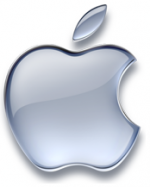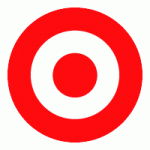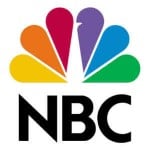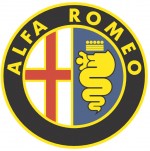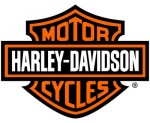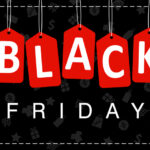Recently we wrote about the different kinds of logos. And showed several examples of iconic, wordmark, lettermark, illustrative, and combination logos. Today we’ll take a closer look at the different logo design types we see with iconic and combination logos.
Common styles for iconic and combination logos
Simple icon logo designs
We already wrote about the five most popular types of logos, but it bears repeating as we contrast simple or recognizable icons to the other types shown below.
A simple logo icon is easily identified for what it is. Picture these: a gray apple with a bite out of it. A red target. A peacock with six colorful feathers. If you’re anything like most American consumers, you can picture each of these logos in your mind without any visual clue (for those of you who can’t, here they are).
There are literally millions of examples of these types of iconic logos. Animal logos from eagles to zebras; shapes from lightning bolts to squares; objects like eye-glasses, soft-drink bottles, a sports star dunking a basketball, two yellow arches, and on and on.
Because simple icons often reinforce the message of the logo, it can be an effective way for small businesses to “train” their customers to recognize their brand. Using a yellow sunshine globe for a business called Sunshine Childcare may not be the most original design idea, but it can be pretty effective in helping busy moms remember the business.
Abstract logo designs
Abstract icons are generally shapes, swirls, dots, patterns, shadows, layers, and other design effects that aren’t easily recognized as a specific thing, like an apple or a peacock. Perhaps the most famous abstract logo design is the Nike Swoosh, which is supposed to be representative of a wing and speed. But the swoosh is neither a wing or speed even though it effectively represents both. Companies with unrecognizable nouns for names (think Seagate or Wallmart or Xanga) often use abstract icons for the very reason that they don’t tie the name to one particular thing.
To show you what we mean, let’s conduct a simple experiment. Choose a name that doesn’t refer to a recognizable noun. We’ll pick “wallop”. Since the word “wallop” refers to an action rather than a thing, a logo for a company called “Wallop” could easily be an abstract icon. And in fact, when we do a quick Internet search for Wallop, we found several different companies with that name using abstract icons in their logo:
More recognizable companies using abstract logo icons include Blackberry, Sony Ericcson, and CenturyLink. One thing you’ll notice about abstract icons—the companies that use them almost always use the company name with the logo. Even big companies. The reason? The abstract icon doesn’t represent a single idea that is closely associated with the company name, so consumers don’t recognize the abstract on its own. The exception here, of course, is the Nike swoosh, which has been featured in enough advertising for the past three decades to make it recognizable to just about everybody.
Want to try your hand at abstract logo design? Our online logo design tool is perfect for the job.
Emblem or shield logo designs
This type of logo design is often referred to as an emblem, shield, or badge logo. These logo are very popular in sports and with companies that might use their logo as a seal (government bureaus and universities, for example). UPS and BP are perhaps the best known companies with enclosures for logos, but there are others. While most enclosures tend to the the shape of a shield (Harley Davidson and the old BP logo), enclosures can be any shape from the circle (Alpha Romeo and Starbucks) and oval (Ford and Kroger) to a square (GM) and to other shapes that aren’t always identifiable (Courtyard Marriott and Lowes).
So what’s the best kind of iconic logo for your business? It really all depends on what you are trying to communicate to your customers. Consider how other companies are using these logo types and which ones would serve you best.
